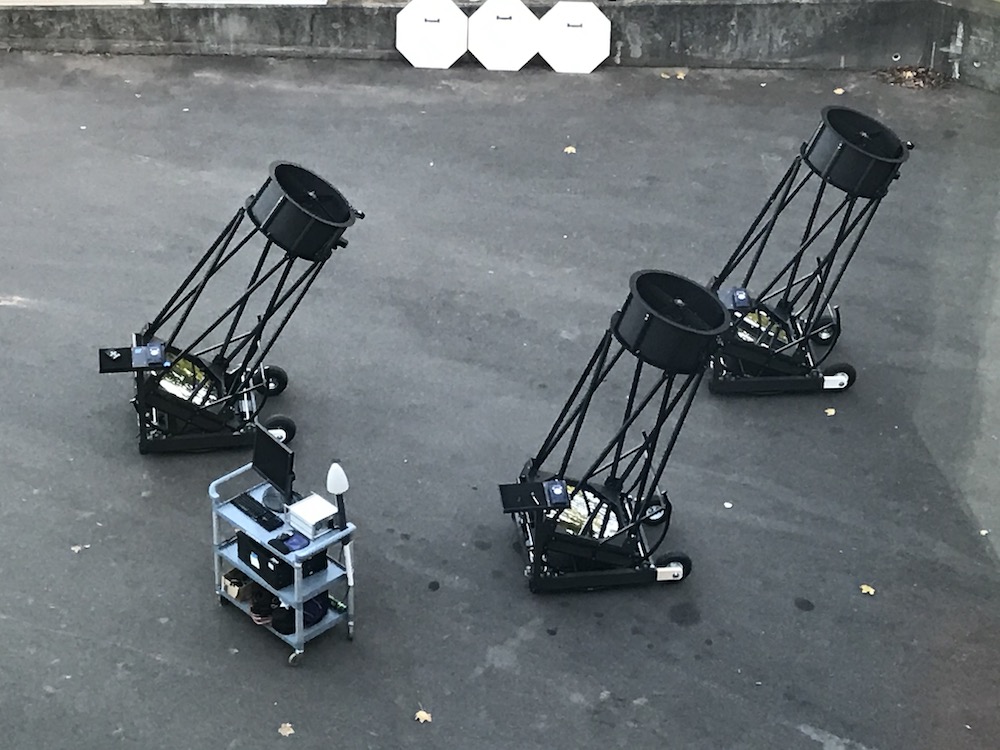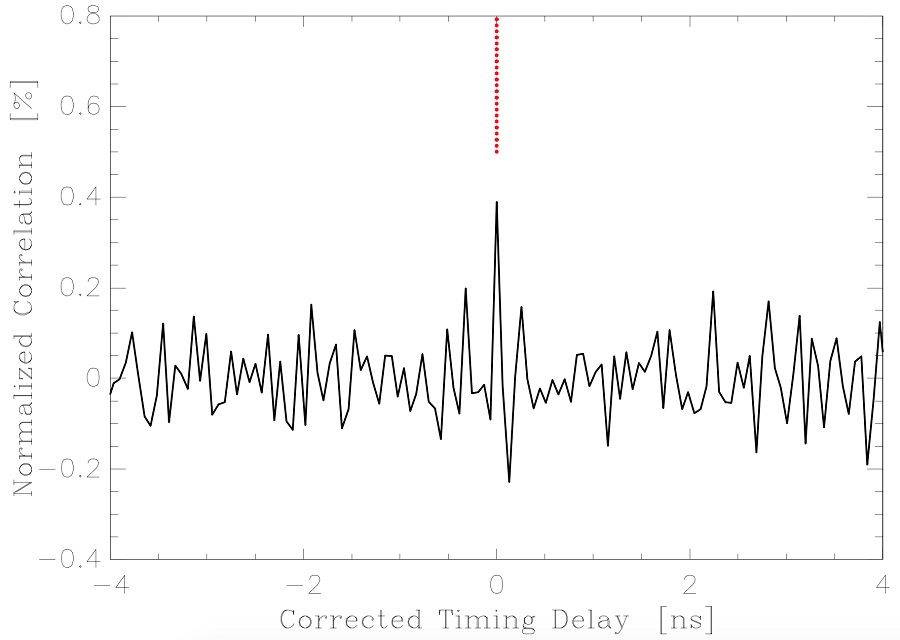

Principal Investigator: Prof. Elliott Horch
The highest resolution optical (visible-light) and infrared imaging of astronomical objects has been dominated by expensive and technologically advanced facilities called long baseline optical interferometers. A significant limitation of the current generation of these instruments is the need to make the light interfere prior to detection (also known as Michelson-style interferometry). This is unlike the radio regime where signals can be recorded quickly enough to use electronics to accomplish the same result. Another technique for obtaining image information in the multiple-telescope, visible-light regime is intensity interferometry. This was first pioneered by Hanbury Brown and Twiss in the 1950's, but was largely abandoned in the 1970's due to the limitations of the technology of the day and the rise of the enabling technologies that led to the current generation of long baseline optical interferometers.
However, intensity interferometry has a key advantage over the the way that current interferometers work. Intensity interferometry requires only that photons are detected with high timing precision at each telescope, not that the light must be brought together to interfere. These photon arrival times can then be cross-correlated after the fact to detect the imaging information. Since detection is less centralized, control over the optical path length is more relaxed, and much easier to achieve. At SCSU, we have built a modern two-telescope intensity interferometer with ultra-fast photon detectors and timing correlators: the Southern Connecticut Stellar Interferometer, or SCSI for short. The instrument takes advantage of the fact that detection can be done at much faster speeds than in the 1970's, which translates into higher signal-to-noise ratios on a given star, and the availability of GPS clocking, which can potentially supersede the need for a central unit for synchronizing the signals and doing the signal processing.
We are grateful for NSF funding in the construction and initial operation of SCSI. Raw data from the instrument is publicly available. Please contact Prof. Elliott Horch for more information.
M.S. Theses and Projects
Samuel A. Weiss, Stellar Photon Correlation Detection with the Southern Connecticut Stellar Interferometer, M.S. Thesis (2018).
Justin D. Rupert, Observational Techniques with a Wireless Optical Intensity Interferometer, M.S. Thesis, (2016).
Recent Publications
Klaucke, P., Pellegrino, R., Weiss, S., Horch, E., "Toward an imaging capability with the Southern Connecticut Stellar Interferometer," SPIE Proceedings, 11446, Optical and Infrared Interferometry and Imaging VII, 114461M (2020).
S. A. Weiss, J. D. Rupert, and E. P. Horch, "Stellar Photon Correlation Detection with the Southern Connecticut Stellar Interferometer," SPIE Proceedings, 10701, Optical and Infrared Interferometry and Imaging VI, 107010X (2018).
E. P. Horch, S. A. Weiss, J. D. Rupert, R. LaRue, P. Peronio, I. Rech, A. Gulinatti, "Prospects for wireless optical intensity interferometry with the Southern Connecticut Stellar Interferometer," SPIE Proceedings,10701, Optical and Infrared Interferometry and Imaging VI, 107010Y (2018).
